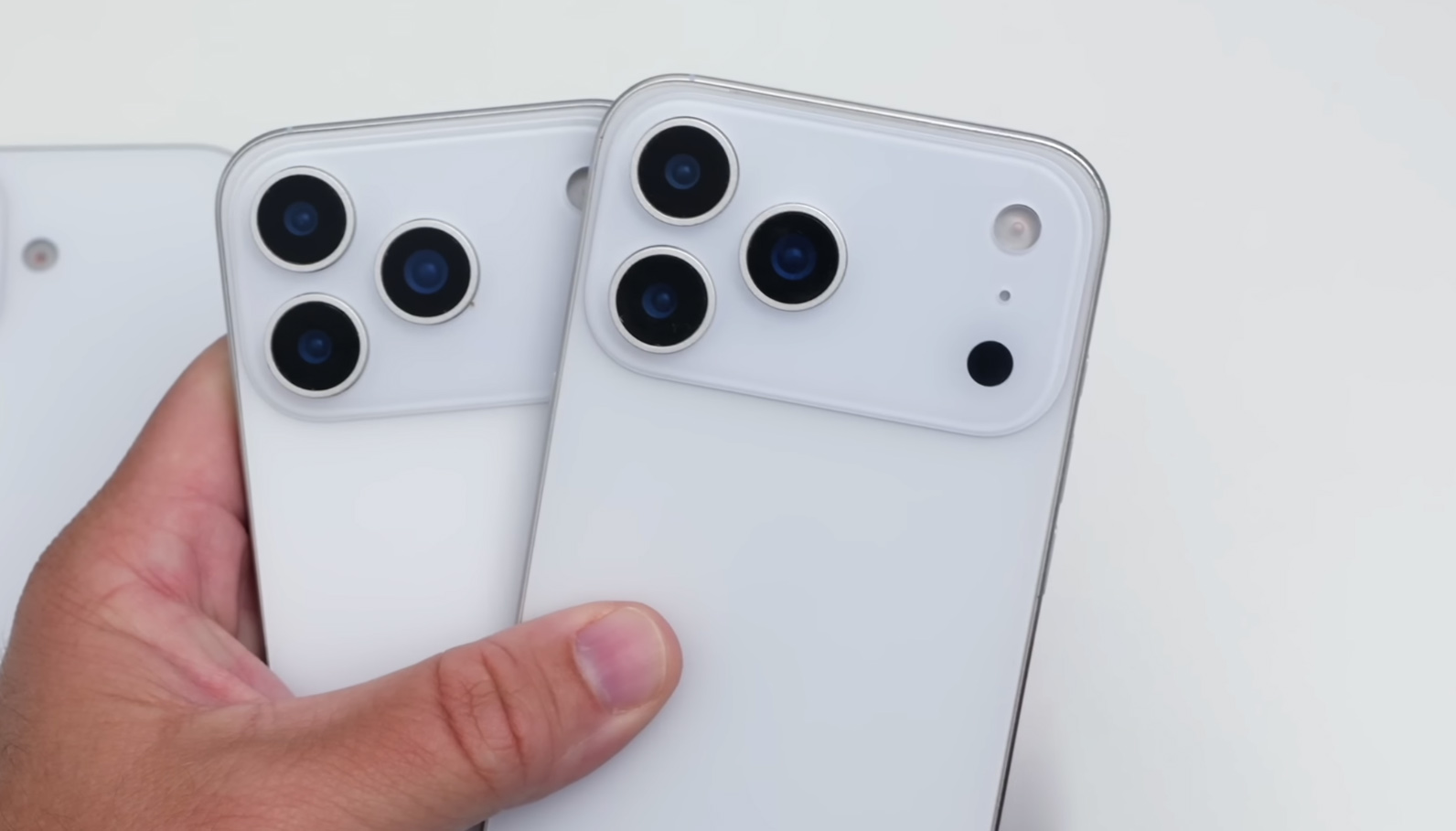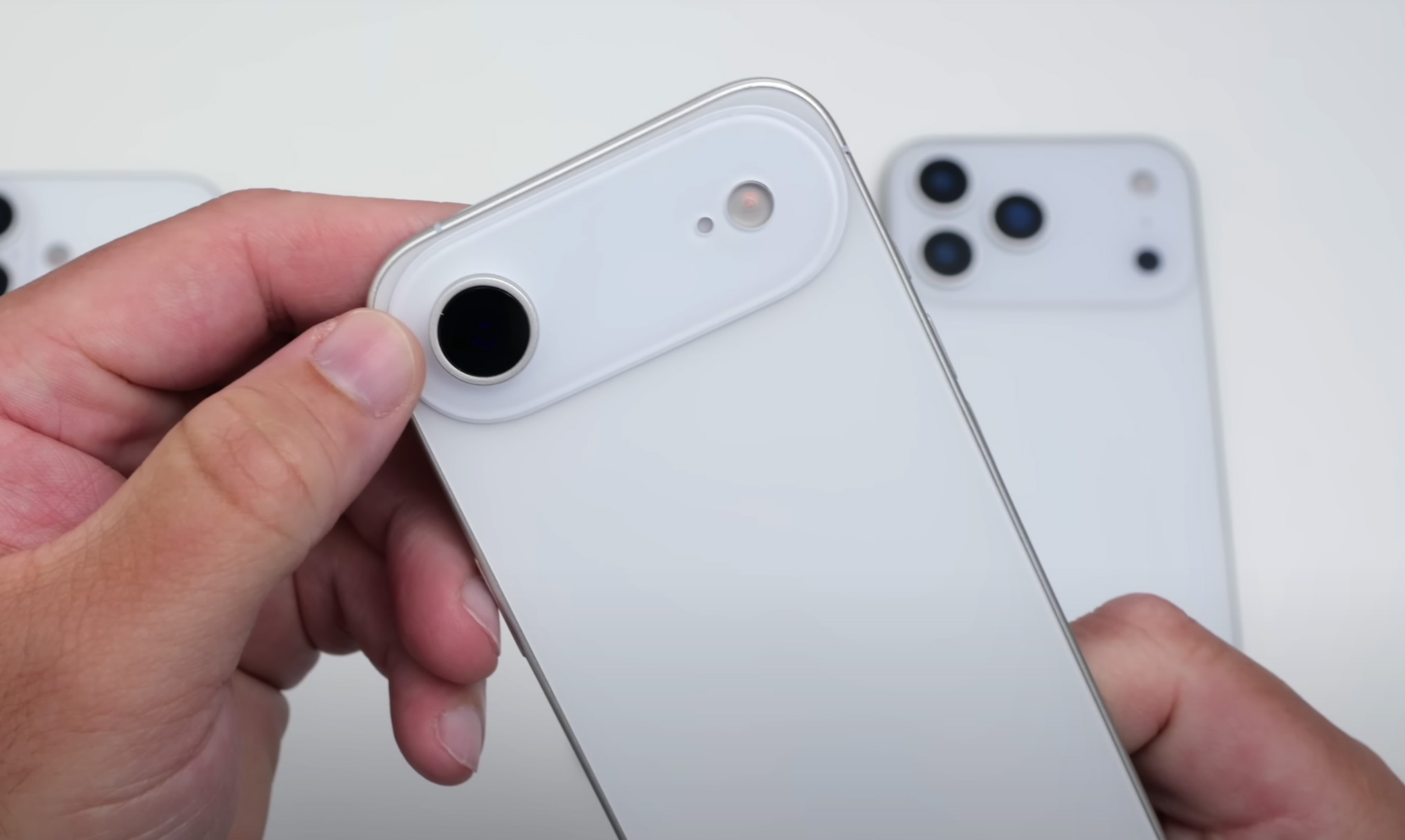
For the last few months, most of the buzz around Apple has focused on iOS 26. With its new Liquid Glass design and refreshed interface, the system has already sparked plenty of debate. Now that the public beta has landed and users can finally see it in action, the spotlight naturally shifts to the device that will ship with it by default – the iPhone 17 lineup.
Apple usually announces new iPhones in September, and that hasn’t changed in years. So if you look at the calendar, there’s not much time left before we see what’s coming. But the real question is – do we actually know anything about the iPhone 17 lineup yet? Turns out, yes. It’s not a full picture, but between insider reports, analyst predictions, and a few well-placed leaks, there’s enough to start forming an idea. That’s what we’re going to break down here.
Table of Contents
What iPhone Models Are on the Table This Year?
If Apple follows its usual playbook, we’ll see four models in the iPhone 17 lineup: the regular iPhone 17, a new mid-tier model, the iPhone 17 Pro, and the iPhone 17 Pro Max. But there’s a small shake-up this time. The Plus model (Apple’s habitually overlooked oversized option) looks ready for retirement. In its place, Apple plans to introduce the new iPhone 17 Air.
The iPhone 17 Air will differ not only by name but also in size and thickness. Sources report a display size around 6.6 inches, placing it between the 6.3-inch iPhone 17 and the 6.9-inch Pro Max. Leaked designs suggest it may measure as little as 5.5 mm thick, making it Apple’s thinnest iPhone yet, and the chassis so slim that Apple relocated the USB-C port just to make it fit.

There were also rumors that Apple might replace the Pro Max with a new top-tier model called the iPhone 17 Ultra. Apple could have rebranded the highest-end device, thrown in some exclusive hardware, and pushed the price even further.
Back in the iPhone 15 era, several sources speculated that Apple might drop the “Pro Max” name in favor of something flashier, like “Ultra.” The idea gained traction for a bit, but then Mark Gurman publicly shut it down, saying there would be no Ultra at that time.
There’s only one new high-end 6.7 inch iPhone. No Pro Max and Ultra this year. Perhaps next year as I wrote in February. https://t.co/mSVCEotmtG https://t.co/OGrU2l3iKn
— Mark Gurman (@markgurman) September 2, 2023
Now, none of the more recent leaks or analyst reports mention the Ultra name anymore. Across the board, sources refer to the top model as the Pro Max. So, unless Apple pulls a last-minute twist, we’re probably looking at the same name we’ve had for the past few years.
So, What’s Up With the iPhone 17 Design This Year?
Apple didn’t just tweak the shade of blue this year. The iPhone 17 lineup finally brings noticeable changes, both in shape and materials.
Let’s start with the Pro models, because they always get the fancier treatment. Leaked dummy units and component images suggest that the iPhone 17 Pro and Pro Max will ditch the old square camera bump and adopt a new, rounded rectangular module stretched across the upper back. The camera layout itself stays in a triangular formation, but this wide “camera bar” gives the rear a cleaner look. It also forces Apple to move the Apple logo lower on the chassis (possibly right onto the MagSafe coil). So if your logo looks oddly placed this year, no, your phone isn’t upside down.
iPhone 17 Pro looks so good pic.twitter.com/P7aFwR5FML
— Majin Bu (@MajinBuOfficial) July 10, 2025
Material-wise, the Pro models might drop titanium in favor of aluminum. According to reports, the rear panel should split into two surfaces: glass on the bottom (to support wireless charging) and metal on the top half, which forms the structural base for the wide camera bar. Apple clearly wants to make these devices tougher without turning them into bricks. Also in the rumor mill: Apple may apply a nano-texture matte glass finish to the front panel (like what they use on Studio Displays) to reduce reflections. Whether this makes it to mass production is still unclear.
The Air also uses a different material strategy. To prevent the device from folding itself in half, Apple reportedly used a titanium alloy frame, stronger than aluminum but lighter than the full stainless builds from past years. This marks the first time titanium enters a non-Pro iPhone, although the use case here is structural, not prestige.
Visually, the Air has only one camera on the back. Don’t panic – Apple didn’t forget the second lens, they left it out on purpose to save internal space and keep the device thin. The single-lens system should still pack a 48MP main sensor, with cropped 2x shots handled by the same kind of computational trickery used in previous models.
iPhone 17 Air looks so fresh pic.twitter.com/oPR0TVroVd
— Majin Bu (@MajinBuOfficial) July 28, 2025
As for the standard iPhone 17, don’t expect magic. Most sources, including display analyst Ross Young, claim its design sticks close to the iPhone 16 with only minor refinements – slightly thinner bezels, slightly different camera layout, nothing groundbreaking.
How Apple Plans to Upgrade iPhone 17 Cameras
Apple never skips a chance to talk about cameras. And in the iPhone 17 series, they might finally have something to show off beyond “improved color accuracy.” Based on recent leaks and analyst reports, the biggest jump happens in the Pro models, but even the Air and base iPhone 17 pick up a few serious upgrades.
Let’s start with the Pro and Pro Max. For the first time, Apple may equip all three rear cameras (wide, ultra-wide, and telephoto) with 48-megapixel sensors. Until now, only the main wide camera had that kind of resolution, while the others stuck to 12MP. With this change, Apple could offer better detail across all lenses and finally stop forcing users to choose between sharp and wide. Rumors also suggest the telephoto lens on the Pro Max could reach 8× optical zoom, thanks to a more advanced periscope system. If that’s true, it would double the current 5× and possibly allow zoom levels across a full range rather than fixed jumps.

Now, the iPhone 17 Air takes a different route. Apple gave it just one rear camera, but not a lazy one. It’s a 48MP wide sensor, which should still handle solid 2× crops using sensor zoom. No ultra-wide. No telephoto. But not a disaster either, unless you absolutely must capture the inside of your fridge from across the room. The reason is obvious – Apple had to save space in the thin body.

Across the entire lineup, Apple reportedly upgrades the front-facing camera to 24MP. That includes the Air and the regular iPhone 17. So your selfies might finally survive a crop without turning into watercolor paintings. The new front module should also use a 6-element lens for sharper shots.
Software-wise, leaks mention a few new features aimed at video creators. Apple might add a dual recording mode, letting users shoot with both front and rear cameras at the same time (this already exists in some third-party apps). There’s also talk about a revamped Pro camera app with manual controls, focus assist, and exposure sliders for people who actually know what they’re doing. The standard Camera app will probably stay the same for everyone else.

Overall, the iPhone 17 Pro lineup looks like a meaningful step forward for photographers, not just a spec sheet flex. And while the Air skips the multi-lens party, its main sensor still pulls enough weight to stay relevant.
What About Power, Battery, and Charging?
The iPhone 17 Pro and Pro Max should ship with the brand-new A19 Pro chip, reportedly built on TSMC’s improved 3nm process. It should offer the usual bump in speed and efficiency. Apple won’t say how much faster it is, but the keynote graphs will definitely have more bars than last year. The regular iPhone 17 and the Air likely fall back to the A18 chip (the same one found in the iPhone 16 Pro models).
All models (even the base ones) are expected to come with 12GB of RAM, up from 8GB. It also makes the phones feel less like they choke every time you switch between apps that weigh more than a few megabytes.
As for battery life, the iPhone 17 Pro Max could include Apple’s largest battery yet – reports suggest something near 5,000mAh. That would top even the 16 Pro Max and push its usage time even higher. Apple might finally break the 30-hour barrier without needing an asterisk. The Pro model (not Max) may also squeeze in a slightly bigger battery, but don’t expect miracles.
Now for the Air, and here’s where it gets complicated. A 5.5mm-thick phone doesn’t leave much space for anything, let alone a battery. Estimates place the capacity around 2,800mAh, which sounds rough. But Apple isn’t giving up there. The Air should use high-density silicon-anode cells, which offer more power in less space. Combined with a power-efficient chip and the lack of extra camera hardware, the Air might last longer than the raw numbers suggest. Still, don’t expect it to beat the Pro Max. You’ll get a full day (barely), but don’t leave your charger at home just yet.

Charging speeds shouldn’t change much as the USB-C port stays, of course. Apple tested support for up to 35W wired charging on the Pro models, though it may cap the base models lower. Wireless charging should get an upgrade across the board to 25W, but only with Qi2-certified chargers.
When to Expect It, How Much to Pay, and What Colors to Regret Choosing Later
Let’s start with the obvious that Apple should unveil the iPhone 17 lineup in September 2025. That’s how the company operates, and unless someone reschedules the entire calendar, they’ll do it again. Most insiders point to the week of September 8, with the keynote likely landing on the 9th or 10th. Pre-orders should open that same week.
As for pricing, don’t hold your breath for anything “affordable.” The iPhone 17 will probably stay around the $799 mark, while the new iPhone 17 Air is expected to cost somewhere between $899 and $999. Apple wants it to replace the Plus in price, not just in name. The Pro models could see a bump. Reports suggest that Apple may raise prices slightly this year, especially on the Pro Max, which now needs to cover its triple 48MP sensors, upgraded chassis, and whatever else Apple throws in there. Some estimates place the starting price for the iPhone 17 Pro Max at $1,299.
Now, on to colors. This part is always more dramatic than it should be. The iPhone 17 and 17 Air will likely come in softer tones – expect the usual blue, green, white, black, and possibly a light purple.
iPhone 17 Purple Looks so Good pic.twitter.com/yTZrxoi9Ot
— Majin Bu (@MajinBuOfficial) July 26, 2025
The Air might get one or two exclusive finishes to match its new status. Meanwhile, the Pro and Pro Max should return with a classic dark titanium or black, plus one hero color. Rumors point to a copper or deep orange finish this time.
iPhone 17 Pro New Colors Revealed
Full Article:https://t.co/3knFKWBdB7 pic.twitter.com/tGoZABVTGP
— Majin Bu (@MajinBuOfficial) July 17, 2025
Final Thoughts
In general, we still don’t have much confirmed information about the iPhone 17 lineup. Apple, as usual, stays silent, and no surprise there. But at the same time, we already know more than enough to understand the direction. We’ve seen detailed leaks about the design, cameras, and battery systems. And when so many sources show the same renders and measurements, the final result rarely turns out much different. So the overall shape of what to expect in September looks more or less clear.
The reaction from users, as always, splits down the middle. Some already declared they’ll skip this generation – “same thing again,” “not worth it,” “keeping my 13 Pro Max until it dies,” and so on. But let’s not pretend this is new. People say the same thing every year, and then they crash the Apple Store at 8 a.m. on pre-order day. We’ve seen the cycle too many times to take those comments seriously.
As for us, we’re optimistic. Apple clearly gave each model a purpose. The Air brings in a fresh design and targets a specific crowd. The Pro and Pro Max double down on performance and camera features. And the standard iPhone 17 stays put for people who just want a reliable phone without drama. Every model now speaks directly to its audience. Whether that wins everyone over, we’ll see in a few weeks.






